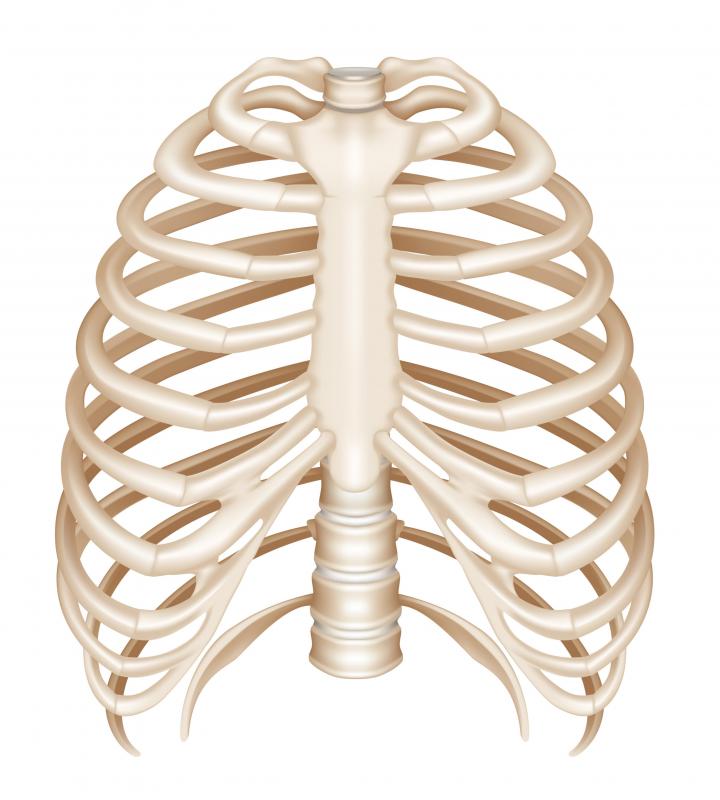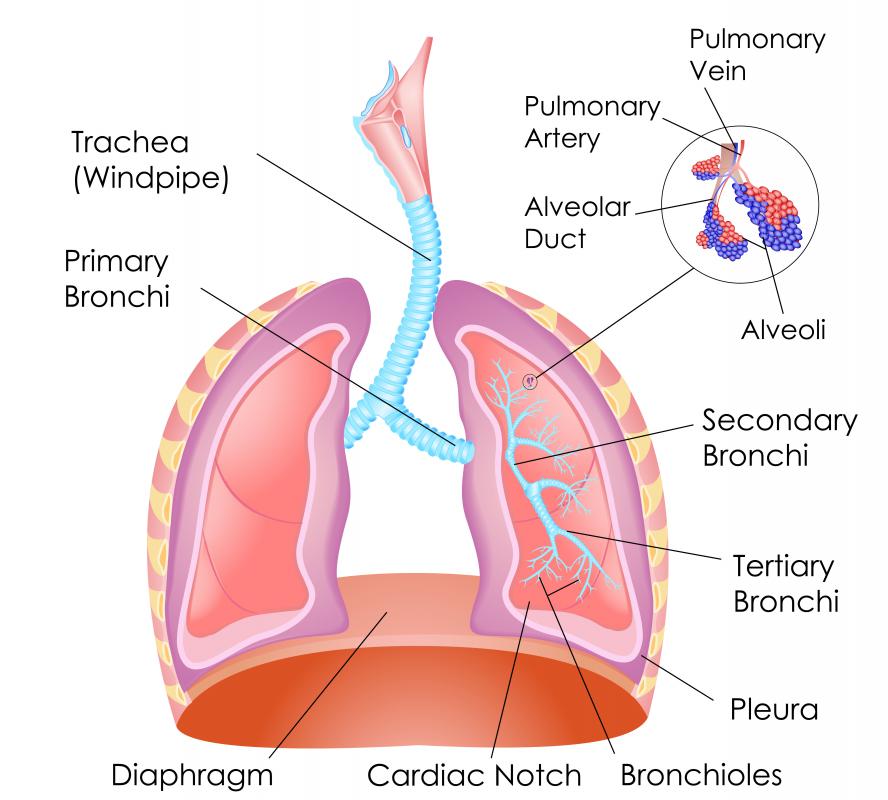At WiseGEEK, we're committed to delivering accurate, trustworthy information. Our expert-authored content is rigorously fact-checked and sourced from credible authorities. Discover how we uphold the highest standards in providing you with reliable knowledge.
What Is the Structure of the Respiratory System?
The respiratory system is involved in the process of gas exchange necessary for the survival of many living things. The functions of the body cause a buildup of many undesirable chemicals. Additionally, the body needs gases from the environment, namely oxygen, to survive. Without the respiratory system, there would be no way to acquire necessary elements and dispose of unwanted metabolic by-products. The structure of the respiratory system includes a number of related components working together to achieve successful gas exchange.
Some basic structures of the respiratory system includes the sinuses, nose, mouth, throat, and windpipe. These all are involved in allowing air to flow freely to and from the lungs. Also included in the structure of the respiratory system are the bronchial tubes, lobes, pleura, cilia, and mucus. Of course, the lungs, pulmonary vessels, diaphragm, ribs, and alveoli cannot be excluded as parts of the structure of the respiratory system.

To understand how the structure of the respiratory system functions, it may be helpful to follow a breath of air into and out of the lungs. Air moves due to the pressure differences created by the respiratory system and the environment. When people inhale or exhale, they change the volume of theirs lungs, a process driven by the contraction and relaxation of the diaphragm, a muscle located at the base of the lungs. These structures are kept safe by the rib cage.

Air enters and passes through the mouth and nose and through open cavities known as sinuses. Then, the air flows down through the windpipe to the bronchial tubes, which are attached to the lungs. Inside the lungs are saclike structures called alveoli, which store this air. These structures are highly vascular and directly attached to the pulmonary vein and artery through capillaries.

The capillaries allow for the actual exchange of gas between the lungs and blood and are part of the vascular nature of the respiratory system. This occurs due to a gradient in concentration. If the lungs are oxygen rich, for example, after an inhale, they will move this element to the oxygen-depleted blood of the pulmonary artery. This blood then moves toward the heart for systemic circulation. The gradient also allows for the movement of unwanted metabolic by-products like carbon dioxide to enter the lungs from the blood prior to exhalation into the atmosphere.

There are certain situations upon which one or more parts of this complex system may not function properly. Symptoms in such cases vary; however, any potential respiratory disorder should be taken seriously. Due to the importance of the structure of the respiratory system, a professional opinion should be consulted if negative symptoms exist.
AS FEATURED ON:
AS FEATURED ON:














Discuss this Article
Post your comments